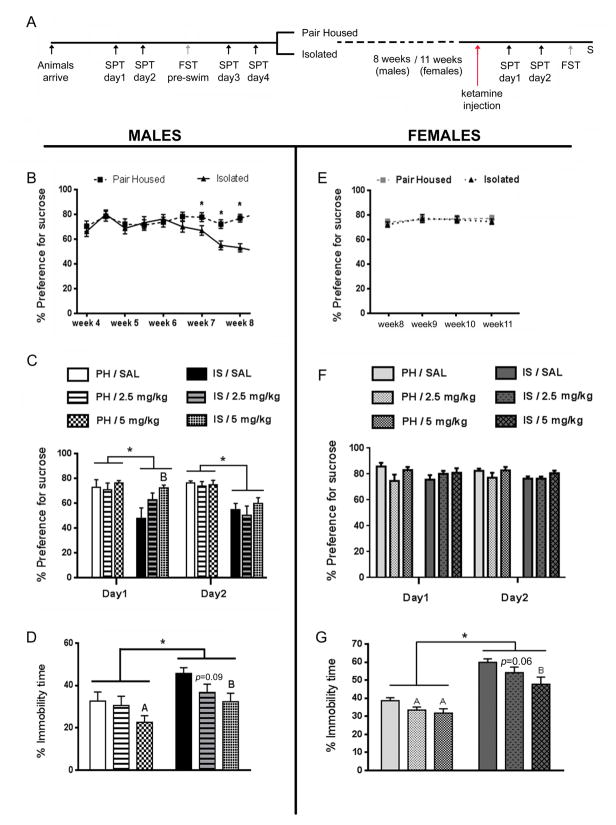Figure 1.
Isolation stress and ketamine affect male and female rats differently, in tests for anhedonia and depression-like behavior. (A) Schematic representation of the experimental design. Animals were tested for their baseline behaviors on the sucrose preference test (SPT) and pre-swim for the forced swim test (FST), prior to grouping into pair-housed (PH) and isolation stress (IS). PH and IS rats lived in respective housing conditions for 8 weeks (males) or 11 weeks (females). Ketamine was injected after week 8 in males and week 11 in females when they were in diestrus. SPT was performed 3 hours (day1) and 27 hours (day2) after ketamine injection, followed by FST on the next day for male rats and the next 1–2 days for females (when they were in diestrus). Animals were sacrificed (S) 1 hour after FST. (B) IS induced a significant and stable decline in sucrose preference after 7 weeks in male rats. (C) This deficit could be rescued by an acute injection of ketamine (5mg/kg) on day1 of SPT, but not on day2. (D) IS also evoked an increase in immobility time, indicative of depression-like behavior in the FST in males. A single injection of ketamine (5mg/kg) reduced immobility time significantly in the FST in both PH and IS male rats. (E) IS did not evoke a decline in sucrose preference in the female rats even after 11 weeks of stress. (F) Ketamine did not increase preference for sucrose in female PH and IS rats, at either dose (2.5 and 5mg/kg). (G) IS evoked a significant increase in immobility time, in the FST in females rats. A single injection of both doses of ketamine (2.5 and 5mg/kg) caused a reduction in immobility time in the FST in PH as well as IS female rats. Data are mean ± SEM for percent preference for sucrose in SPT and percent immobility time in FST [n = 8/group (males), 6/group (females)]. (*p<0.05, Ap<0.05 compared to PH/SAL, Bp<0.05 compared to IS/SAL, repeated measures ANOVA for SPT and two way ANOVA for FST, Fisher’s post-hoc test)

